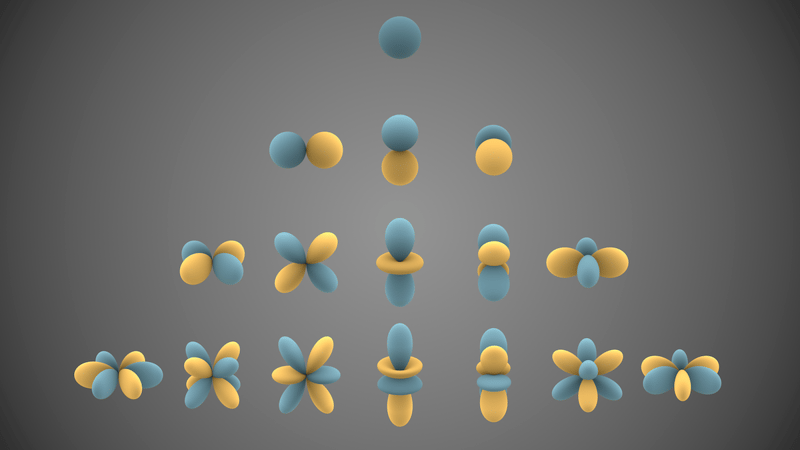Learn how Ambisonic audio can help you take your sound design to the next level.
While browsing for sound effects, you may have noticed our Ambisonic libraries, seen the term mentioned in metadata, or come across it in your sound design work. So, what are Ambisonic recordings, how are they different from surround recordings, and how can you use them in your own work? This article, part of a series dedicated to demystifying audio terms, will explain the core concepts of the format, the technology behind it, and how Ambisonic sound effects can benefit your productions.
What is Ambisonic Audio?
Ambisonics is a multichannel spatial audio format capable of capturing and reproducing a complete three-dimensional soundfield. Unlike traditional surround sound formats, which only create a two-dimensional circle around the listener, Ambisonic format is capable of rendering sounds above and below as well. Ambisonics is distinct from object-based spatial audio formats like Dolby Atmos and DTS:X, but it is compatible with them.
When it comes to sound effects, the Ambisonic format is ideal for representing the full scope of a soundscape with greater spatial resolution than typical surround formats. Because Ambisonic audio provides a complete sphere of sound, it brings to life immersive details like the canopy of the rainforest above, the bustle of the city surrounding you, or thunder rolling overhead while rain patters on the ground. Even subtler soundscapes like room tones can become more immersive with Ambisonics.
Ambisonic audio isn’t limited to field recordings, though – using Ambisonic mixing tools like the Ambisonic Toolkit, it’s possible to create a custom three-dimensional soundscape by positioning and moving layers of mono, stereo, and surround tracks. However, this article will focus on Ambisonics as they relate to sound effects.
How Does Ambisonic Audio Work?
To make the seemingly magical effect of spatial audio possible, Ambisonic format uses the same basic principle as a mid/side microphone array. In a mid/side array, a bidirectional “side” microphone signal is duplicated, polarity-reversed, and combined with a cardioid or omnidirectional “mid” microphone, revealing spatial information from the phase differences between sounds arriving from the left and right. A simple way to think about Ambisonic format is to imagine additional “side” channels covering a full sphere of spatialized sound.
The basic form of Ambisonics, called “first order,” uses just four channels: W, X, Y, and Z. The W channel contains the total sound coming from all directions, while the Y channel contains the spatial information for sounds coming from the left and right sides, and the X and Z channels represent the front/back and up/down directions, respectively. And when all four channels are combined, a complete three-dimensional soundfield is created from the differentials between the channels. Higher-order Ambisonic formats use the same principle, but require 10, 16, or more channels to provide even more spatial resolution derived from higher spherical harmonics.
"Unlike traditional surround sound formats, which only create a two-dimensional circle around the listener, Ambisonic format is capable of rendering sounds above and below as well."
A visual representation of spherical harmonics (by Inigo.Quiez - CC BY-SA 3.0)
How do Ambisonic Microphones Work?
Making Ambisonic recordings requires an Ambisonic microphone. The most common type is a first-order Ambisonic microphone, which utilizes four capsules in a tetrahedral array to capture the entire sphere of sound around the microphone. Second- and third-order Ambisonic microphones feature additional capsules in increasingly complex arrays to capture the soundfield with greater spatial resolution.
The raw multichannel recordings from an Ambisonic microphone are called “A format,” meaning each channel represents the signal captured by one of the capsules. In order to be used in a mix, the files need to be converted to “B format” (described in the section above). To make things even more complicated, there are two standard channel orders for B-format, known as AmbiX (WYZX) and FuMa (WXYZ). Some Ambisonic microphones, like the Zoom H3-VR, automatically convert from A to B format, while others will require conversion using a tool like SurroundZone 2. However you convert your recordings, it’s critical to know which is which in order to hear the full spatial information.
How to Use Ambisonic Recordings
In order to be heard properly, Ambisonic audio files need to be “decoded” for the playback system you’re listening on. Pro Sound Effects Ambisonics libraries come with SurroundZone2 software, which allows you to convert Ambisonic A-format and B-format files to various output formats from stereo to 7.1 using virtual microphones. However, in order to hear the full three-dimensional soundfield, you’ll need either a monitoring system with height channels, such as a 7.1.4 or 5.1.2 configuration, or a binaural decoder plugin for headphones. Binaural decoders use HRTF technology to represent the soundfield the way human ears would hear it.
In film and other linear media, Ambisonic recordings are typically decoded using the highest-resolution surround format possible, up to and including 7.1.2 beds in Dolby Atmos mixes. However, even if you’re working in traditional 5.1 or 7.1 surround, properly decoded Ambisonic recordings can still sound much more immersive than a standard surround file. Another way to use Ambisonic recordings is to “zoom in” with virtual microphones to isolate sounds from specific directions, such as a bird in a Pacific Northwest forest.
In video games, decoding is often part of the game engine, allowing players to select stereo, surround, or binaural monitoring for the entire mix. Ambisonic audio allows game sound designers to create immersive ambiences that move as the player or camera moves, along with individual sounds positioned in 3D. For instance, instead of a typical surround recording in a forest environment that only rotates in a circle, an Ambisonic recording would change as the camera looks up and down, as well. In virtual- and augmented-reality experiences, Ambisonic audio can be linked to head-tracking technology, allowing the sound to change in real time as you look around the virtual space.
Start Exploring Ambisonics
The best way to learn about Ambisonic audio is to experience it for yourself. Check out our selection of Ambisonic sound libraries for your next project, or start by experimenting with free Ambisonic test files. Once you’re familiar with the concepts and workflow of Ambisonics, the sky's the limit for your spatial audio sound design.
Dante Fumo is a Midwest-based sound designer, editor, and mixer specializing in independent film and Dolby Atmos mixing. In his free time, Dante composes electronic music and publishes Harmonic Content, a zine about sound.














